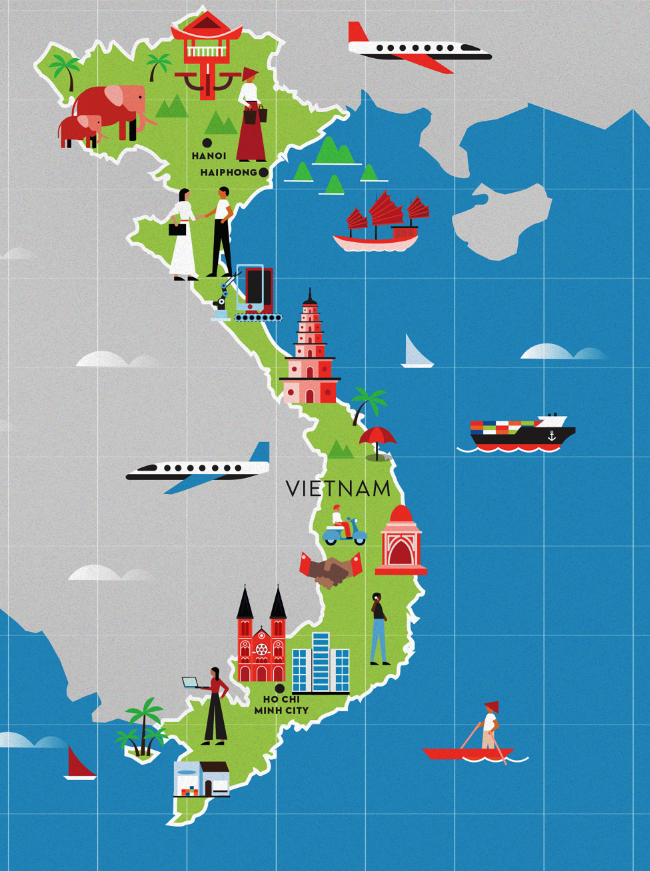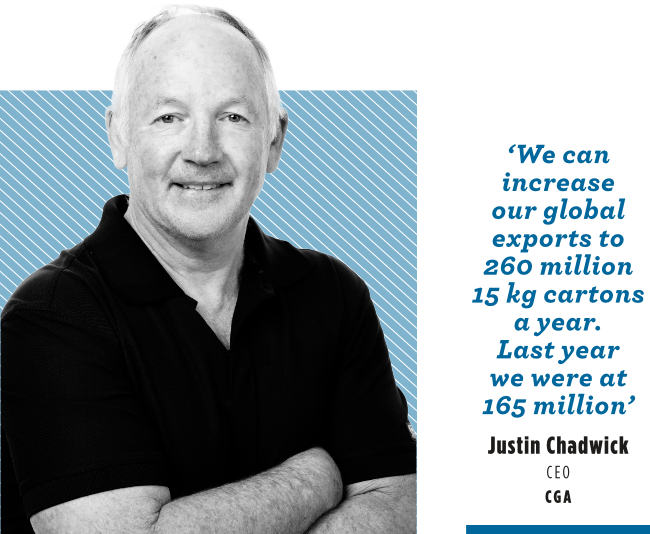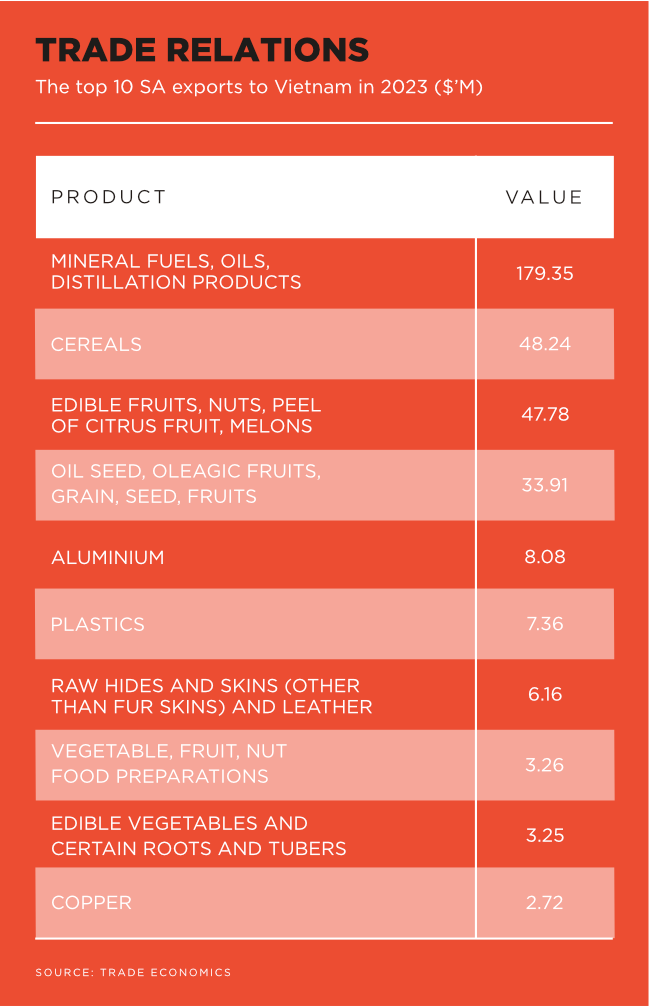When the American aircraft carrier USS Ronald Reagan entered Vietnamese territorial waters last June, the sight conjured up memories of the years of conflict that assailed the country in the 1960s and early 1970s. Yet this was a friendship visit because the Socialist Republic of Vietnam has recently become important, not only to the US but to the world economy.
In recent years, Vietnam has been the world’s most rapidly industrialising country. The rise of industry has seen its economy grow at a rate of more than 6% every year since 2007, except for the COVID-stricken years, 2020 to 2021. BNP Paribas predicts a growth rate of 6.2% for 2024.
The presence of the USS Ronald Reagan was a prelude to the first US-Vietnam Friendship Festival, held in Hanoi in December. US President Joe Biden had visited Vietnam in September to unveil a comprehensive strategic partnership. This upgrading of the relationship between the two countries is expected to improve foreign investor confidence and investment inflows. It also reflects a new assertiveness in Vietnam’s foreign relations.
Economic growth has seen the rise of a Vietnamese consumer class, potentially 100 million in number, which offers opportunities to SA commodity and agricultural exporters. However, as Nomalungelo Gina, then-Deputy Minister of Trade, Industry and Competition, noted last year, ‘South Africa’s basket of imports from Vietnam is diversified compared to South African exports [to that country]. There is a need to diversify South Africa’s export basket. There’s scope for South Africa to increase exports of manufactured goods such as capital equipment, agro-processed goods and automotive components’.
SA’s main exports to Vietnam include agricultural products. Maize is the biggest of these, followed by apples and pears, grapes and, recently, oranges. By contrast, Vietnam’s exports to SA are manufactured products, mostly electronic goods, such as cellular handsets and printers.
In March this year, the Citrus Growers Association of Southern Africa (CGA) announced that, under a new bilateral protocol, SA would be exporting oranges to Vietnam. The agreement addresses various phytosanitary issues and is expected to open a 15 000 ton market to SA exporters.
‘The Vietnam market is very important,’ says Justin Chadwick, CEO of the CGA. SA, the world’s second-largest citrus exporter, can produce even more. ‘A lot of new plantings are starting to bear fruit. We can increase our global exports to 260 million 15 kg cartons a year. Last year we were at 165 million.’
Chadwick adds that the CGA ‘sees a lot more potential in Vietnam and Asia in general. Now that oranges have passed for entry, applications for mandarins, grape fruit and lemons will follow’.
Chadwick emphasises the role of governments in expanding trade. Phytosanitary protocols are government-to-government agreements. ‘The departments of Agriculture as well as Trade, Industry and Competition, played an essential role,’ he says, adding that ‘the overall process involved years of negotiations, site visits, advocacy trips, research reports and high-level trade discussions’.
Vietnam is a major hub of electronics manufacturing. Some of the world’s biggest electronics manufacturers, such as Intel, Canon, South Korean giants Samsung and LG, and Foxconn (the manufacturer of Apple products), have chosen to locate large factories there. Samsung manufactures half its phones in Vietnam and is the biggest single investor in the country, having invested $20 billion in 2022.
The key moment was Vietnam’s accession to the World Trade Organisation in 2006. The previous year, anticipating the move, US silicon chip manufacturer Intel spent $300 million to establish a semiconductor assembly and testing facility in Ho Chi Minh City (previously Saigon).
Some commentators have described Vietnam as a ‘magnet’ for foreign direct investment. In the first half of 2023, it attracted fixed investment from 90 countries. The top investors were all Asian – led by the Republic of Korea ($81 billion), followed by Singapore and Japan. The top market for Vietnamese exports is the US, worth $97 billion in 2023. The US buys the same Vietnamese products as everyone else – consumer electronics, smart phones, footwear and textiles. Vietnam is the US’ 10th-largest trading partner.
SA offers some stark contrasts with Vietnam, but also some parallels. As Vietnamese manufacturing has exploded, SA has struggled to retain inherited capacity. Manufacturing in SA in 2023 accounted for only 13% of GDP, down from 24% in 1990. Vietnam has followed the opposite trajectory. According to World Bank data, in 2022, manufacturing accounted for 25% of GDP, up from 17% in 2010. The same year, manufactured goods accounted for 91% of Vietnam’s exports, compared to 57% in 2011.
Structural factors account for much of the difference. Vietnam is a single-party state with a passive labour force and a strong developmental state, centred on the Ministry of Industry and Trade, which is itself modelled on Japan’s legendary Ministry of International Trade and Industry. The country shares a land border with China, which allows access to a market of more than a billion consumers. It is also located on oceanic logistics routes which service China, Japan and South Korea.
Industrial development is the over-riding objective of the government of Vietnam. In an article in American Affairs, writer Daniel Bring observes that ‘development has become the national purpose that Vietnam, frustrated in its transition to communism, failed to achieve in the years after reunification’.
In other respects Vietnam and SA seem rather similar. One of the major issues confronting both countries is energy security. SA has faced unreliable electricity supply since 2008 but may have finally gotten on top of the issue this year. As of early July, SA had been free of load shedding for more than three months. However, Vietnam’s energy situation has been deteriorating over the past two years.
In 2023, a heatwave in Vietnam led to power shortages, which meant that some of the foreign-owned tech manufacturers experienced blackouts. This followed disruptions the previous year. But Vietnam cannot afford this sort of real and reputational damage. Its future ambitions include moving up the tech value chain, especially in semiconductor fabrication. In March this year, the Vietnam government assured investors that there would be no electricity cuts in the future.
However, to ensure energy security, Vietnam is burning more coal. As recently as last year, Vietnam seemed to be an exemplar of a nation transitioning to a low-carbon economy. SA’s Electricity and Energy Minister Kgosientsho Ramakgopa visited Vietnam last year to look at how things are done in a country that has increased its electricity production ten-fold in two decades (from 5 000 MW in 2000 to 69 000 MW now).
Last year, coal-fired power plants accounted for one-third of capacity. This year they have increased to two-thirds. A report by Germany’s Heinrich Böll Foundation expects the situation to continue until 2030.
Speaking after meeting with a Vietnamese trade delegation last year, Deputy President Paul Mashatile listed coal as one of the SA products sought by the Vietnamese emissaries. ‘We’ll be able to provide that,’ he said. But this ignores the logistics hurdles that have hampered SA coal exports in recent years. In 2022, the 91 million ton capacity Richards Bay coal terminal could only export 50 million tons thanks entirely to logistical issues on the dedicated Witbank-Richards Bay coal line.
Vietnam is, arguably, the biggest recent winner of the global offshoring of supply chains. Its booming manufacturing sector makes it, like China before it, hungry for resources. Feeding that hunger offers myriad opportunities.










